Yellowstone National Park is one of the most popular parks in the United States, and for a good reason! There are many things to do and see here, but it can be tough to know where to start. So here are some suggestions to make the most of your trip with my best photo spots.

Photography in Yellowstone National Park can be a truly rewarding experience. There are so many different things to photograph here, from the wildlife to the beautiful landscapes. With such a wide variety of subject matter, it can be tough to know where to start. That’s why I’ve put together this list of the seven best photo spots in Yellowstone. If you’re looking to capture some amazing shots while visiting Yellowstone, then make sure to check out these locations!
All of these photos are from a trip I took to Yellowstone National Park with fellow photographers, AD Wheeler (https://www.theexplorographer.com/), Mary Presson Roberts (https://www.themaryphotographer.com/), and Lynn Wiezycki (https://www.theilluminatinglens.com/).
What are the best spots to photograph in Yellowstone National Park?
Grand Prismatic Spring & Overlook
Grand Prismatic Spring is Yellowstone’s largest hot spring. It is also the largest hot spring in the United States and the third-largest in the world. The vibrant colors of this beautiful spring make for a great photo opportunity. The colors in the water, and the area around it, are created by the different types of organisms found in the spring.
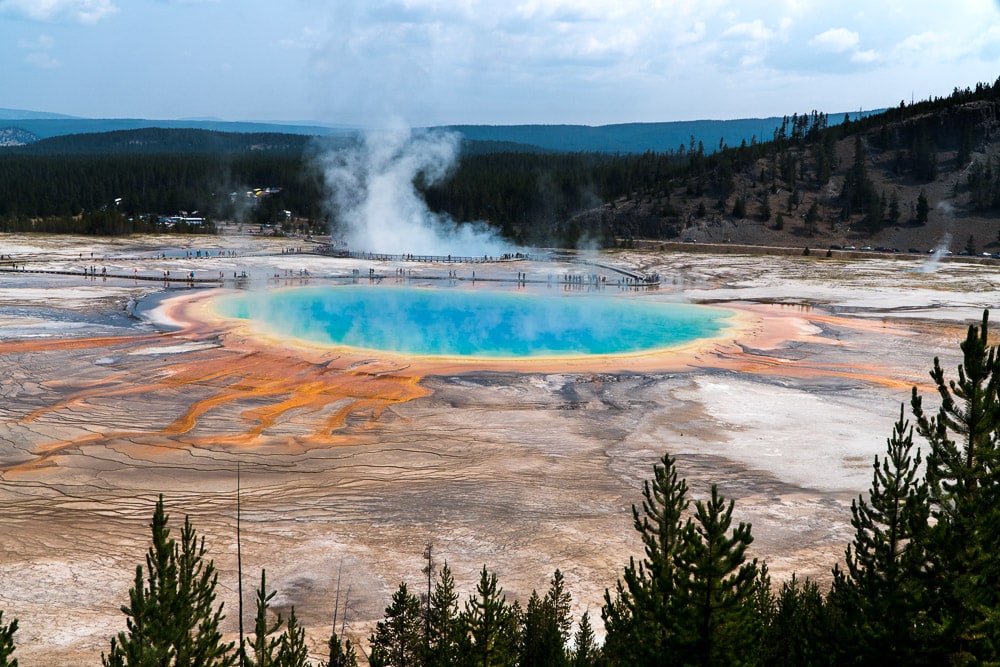
The bright, vivid hues in the hot spring are due to bacterial mats that form around the mineral-rich water’s margins. The colors of the microbial mats range from green to crimson, depending on the ratio of chlorophyll to carotenoids. They are affected by the temperature gradient in the runoff and the air temperature. The colors tend to be redder in the summer, and you’ll see more greens in the winter.
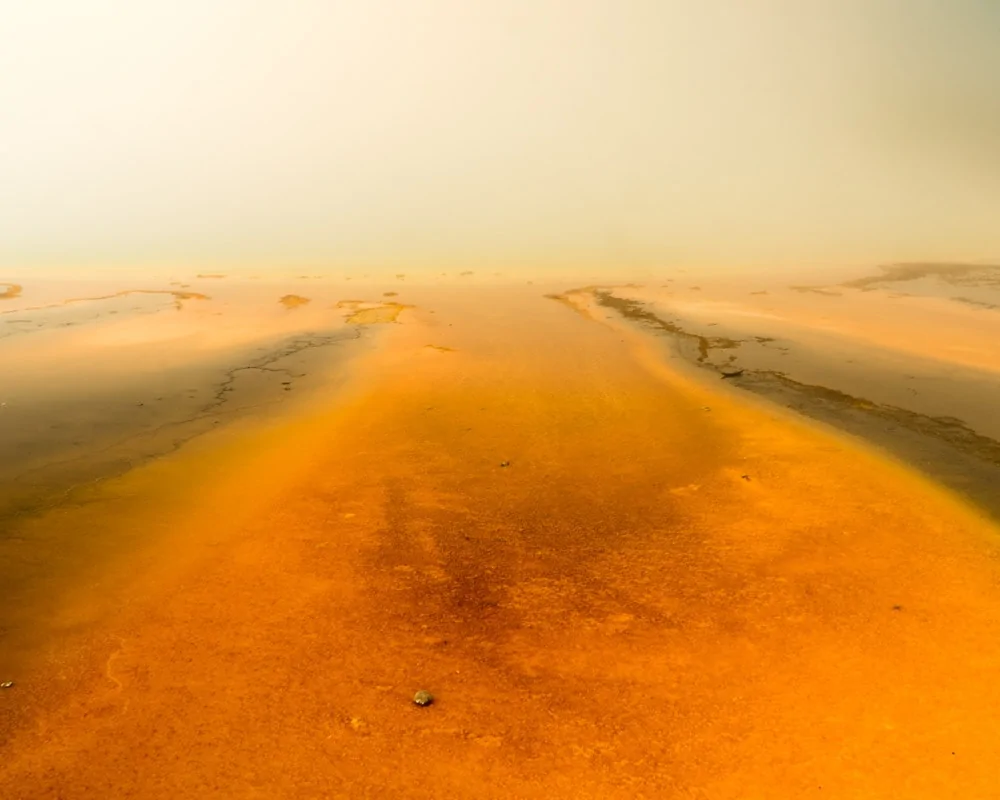
The clarity of the water causes the rich blue color in the center of the Grand Prismatic Spring. The pool is so hot and deep that none of the microbes can live there, so all you see is the inherent blue of the water.
Getting to the spring in the morning golden hour will provide the best views of the rising steam from the heated pools.
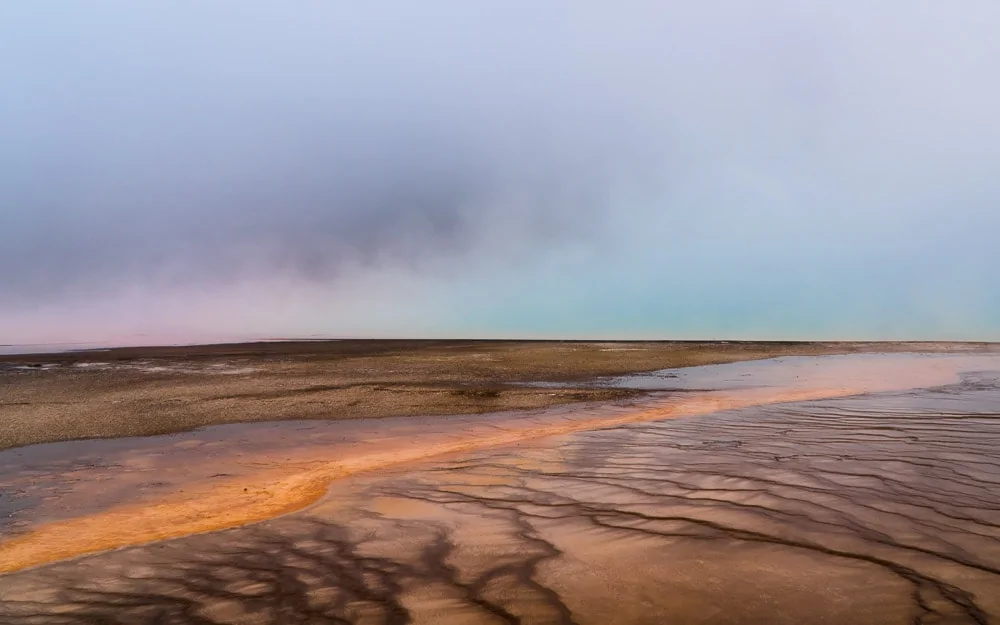
If you want to view the whole hot spring and see all the gorgeous colors, the best photos are taken from the Grand Prismatic Spring overlook. The overlook is just a short walk up the hills behind the pool.
Mammoth Hot Springs
The hot water from Mammoth Hot Springs forms a series of terraces composed of travertine deposited by hydrothermal springs that have flowed into the valley near the north end of Yellowstone National Park. The unique colors of the spring water reflect diverse minerals in the travertine, including an iron oxide, which lends the terraces their yellowish-brown color.
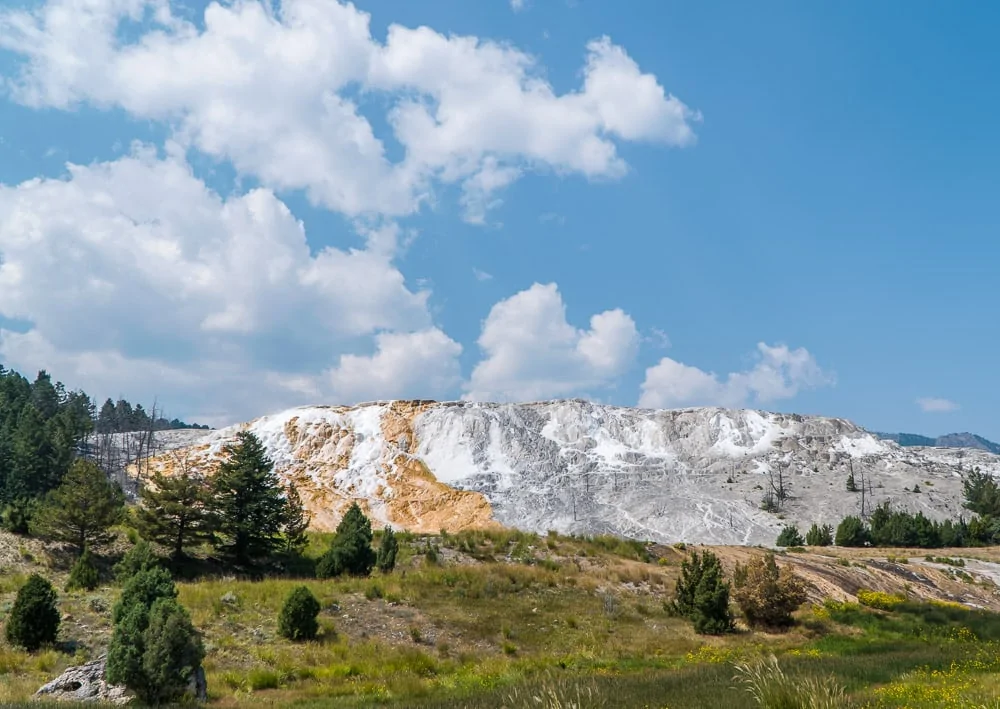
These terraces in this area are created by geothermally heated water flowing up through the ground. The spring waters here are about 50-60C (125F). As the hot water rises to the surface of Mammoth Hot Springs, dissolved limestone and other minerals crystallize out, forming the travertine deposits.
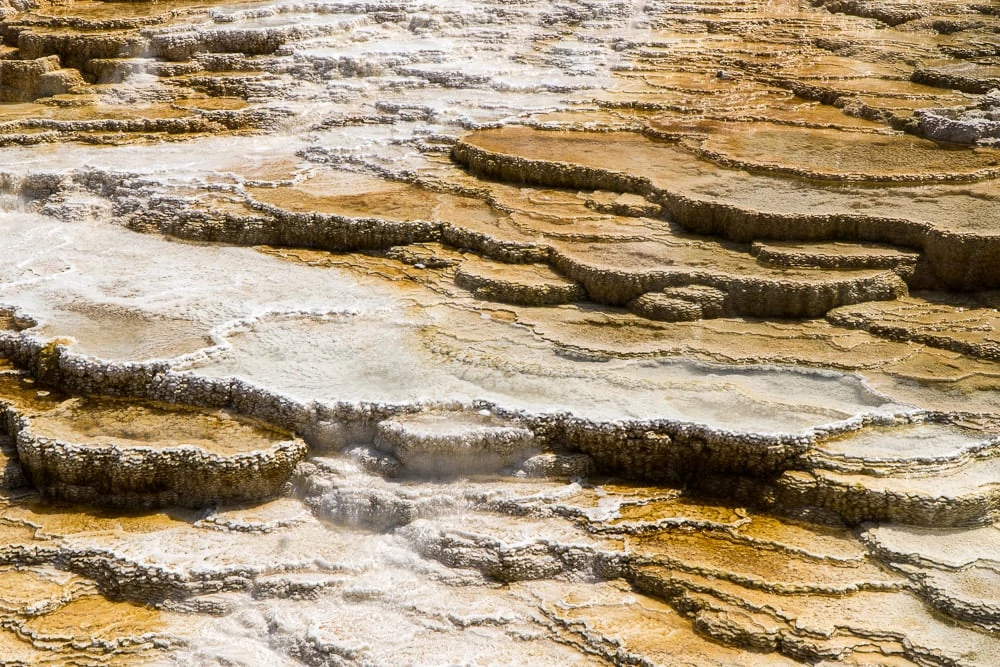
Mammoth Hot Springs boardwalk is one of the most popular areas for visitors to explore. The boardwalk offers some fantastic views of the springs, streams, pools, and terraces that make up the cliff area. The terrain is littered with dead trees making for a nearly apocalyptic landscape.
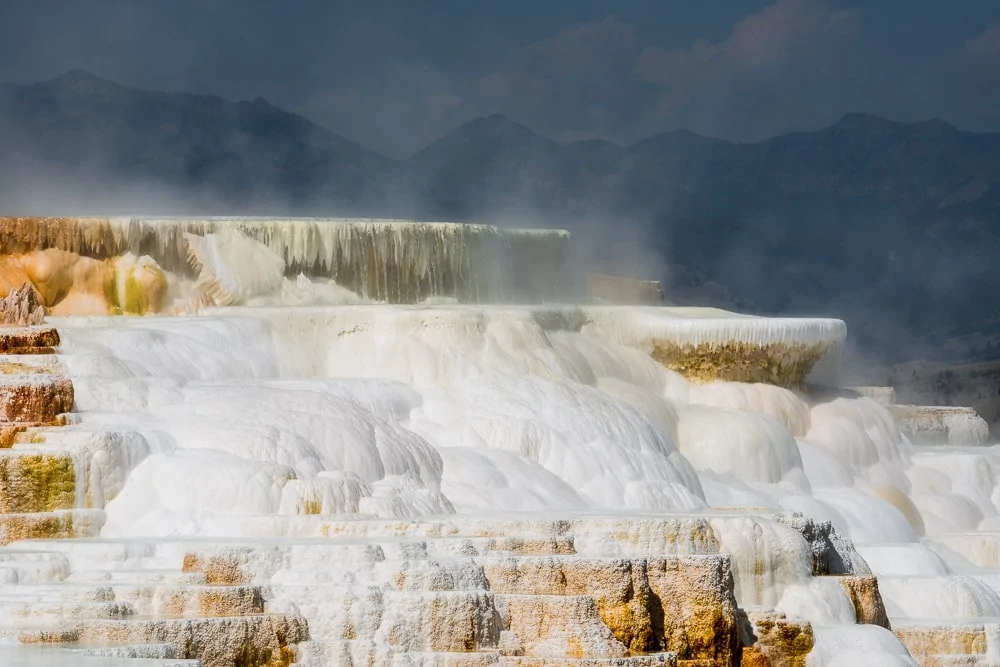
Just down the road is the historic Mammoth Hot Springs Hotel. This building was the first guest hotel to be built in Yellowstone National Park. The hotel opened in December of 1918 to serve visitors for the park’s development.
A 2019 restoration project restored the building to its original appearance, including restoring features such as an old-fashioned lobby and sleeping porches on top of the building.
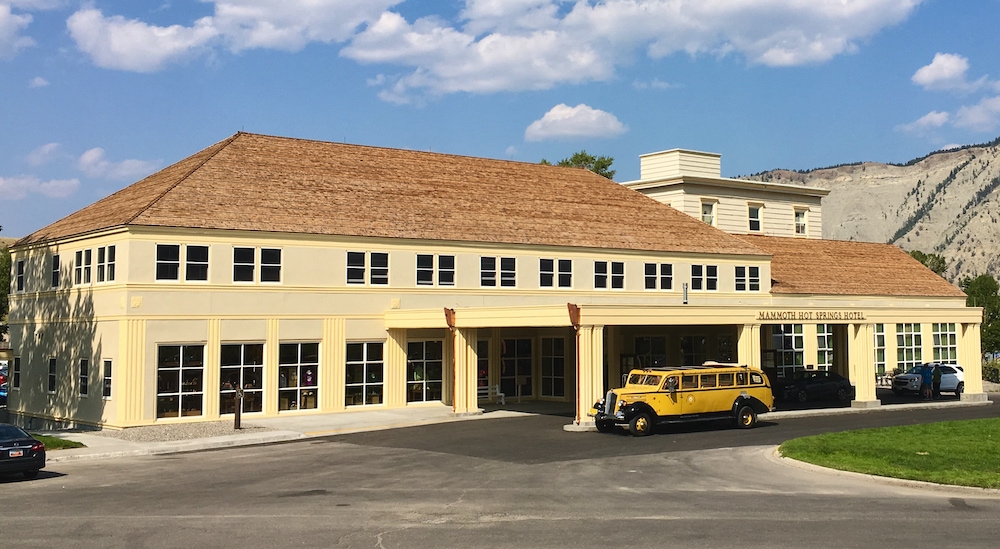
When visiting Mammoth Hot Springs area, make sure to allocate some time to visit the hotel and grab some of their excellent ice creams. It’s a worthy treat after climbing to the top of the trail.
Firehole Lake Drive
Firehole Lake Drive is found in the northwest section of Yellowstone National Park, near Old Faithful. This road leads around the Firehole River to Madison Junction. It’s a 6.2 mile paved loop with many scenic viewpoints. The best time to drive it is during sunrise or sunset, when the colors are most vibrant.
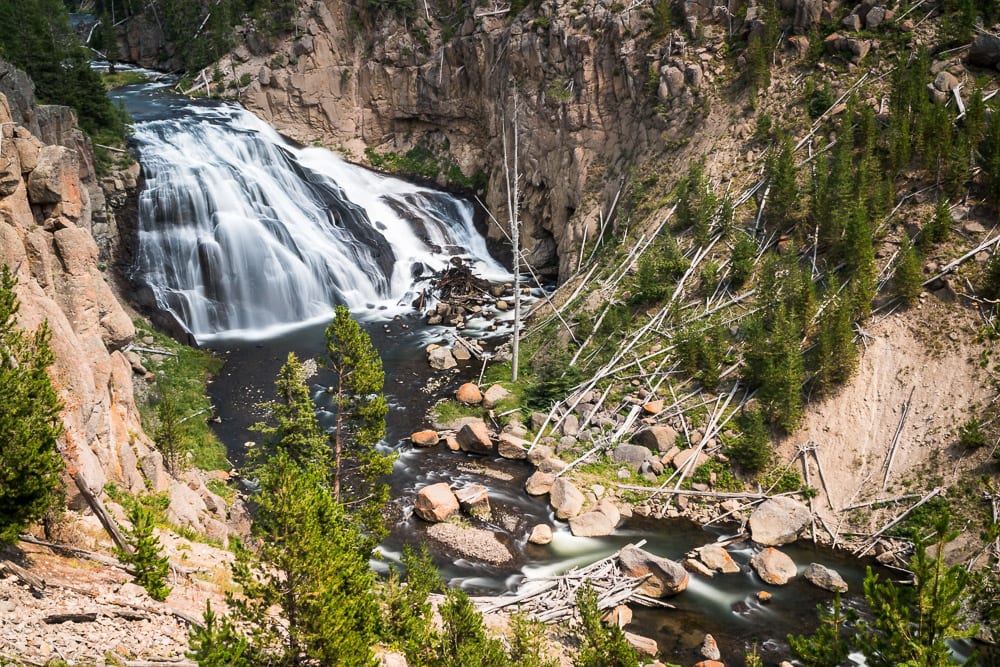
When it is warmer outside, the geothermal activity will make this area steamy through the cracks in the rocks. If you want, you can get up close to the bubbling springs.
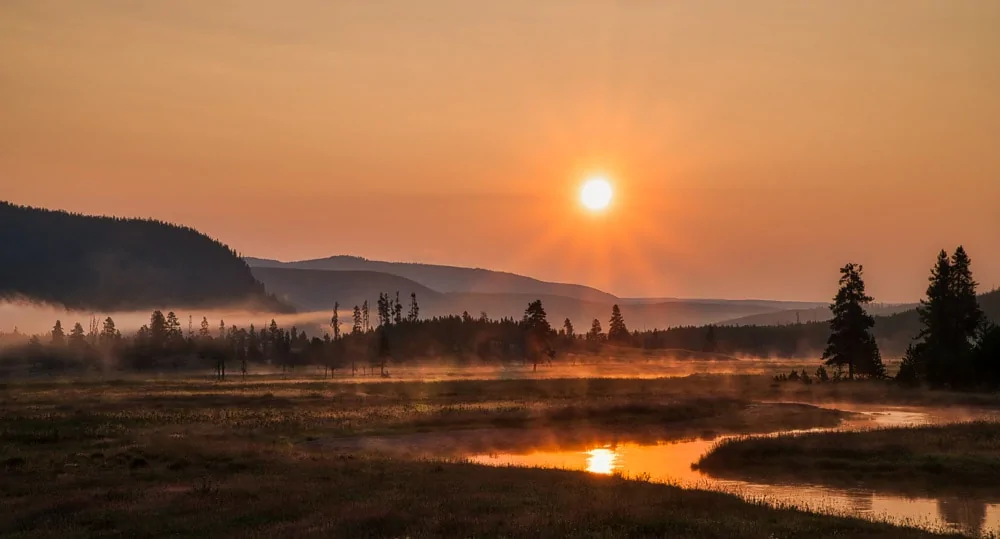
Great Fountain Geyser
Great Fountain Geyser is a fountain-type geyser in the Lower Geyser Basin of Yellowstone National Park. It is located near the Excelsior Geyser, about halfway between Old Faithful and Morning Glory Pool along Firehole Lake Drive.
Great Fountain Geyser was named for its large, regular eruptions that can reach heights up to 250 feet. The intervals between eruptions average 7 hours, but they can be as short as 2 hours or as long as 26 hours.
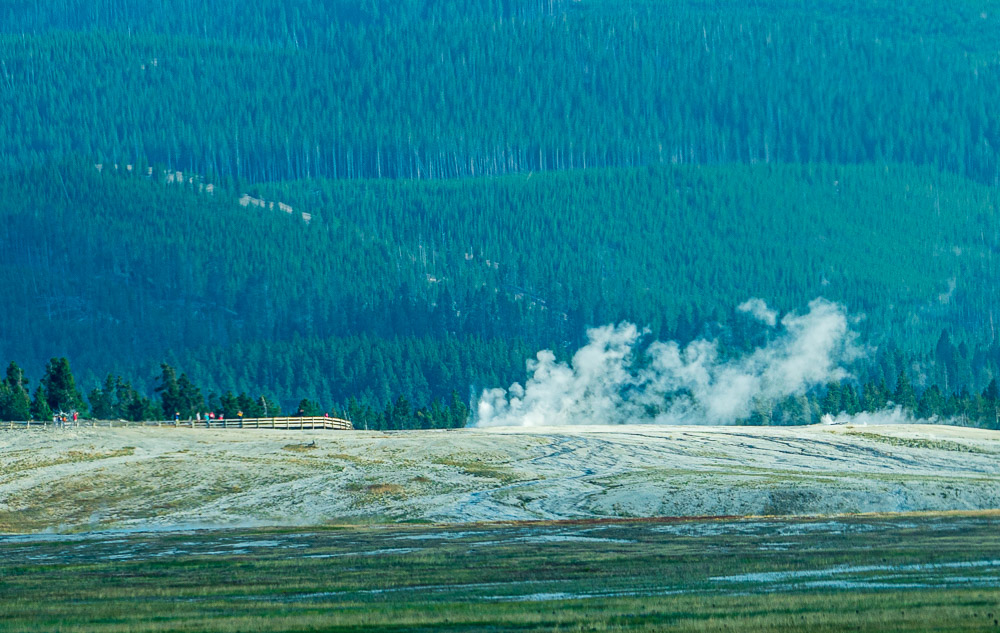
The geyser has two vents, one on the north side and one on the south side. The eruptions start from the north vent and sometimes switch to the south vent.
The water in Great Fountain Geyser is very hot and is usually blue, sometimes green in color. It has been known to overflow to the ground level when the geyser is erupting.
West Thumb Geyser Basin
The West Thumb Geyser Basin is on the western shore of Yellowstone Lake. While relatively unknown, this spot has some of the most unique geothermal features in the park. It is a great place for wildlife viewing as well! There are a number of thermal pools here that all have something different to offer.
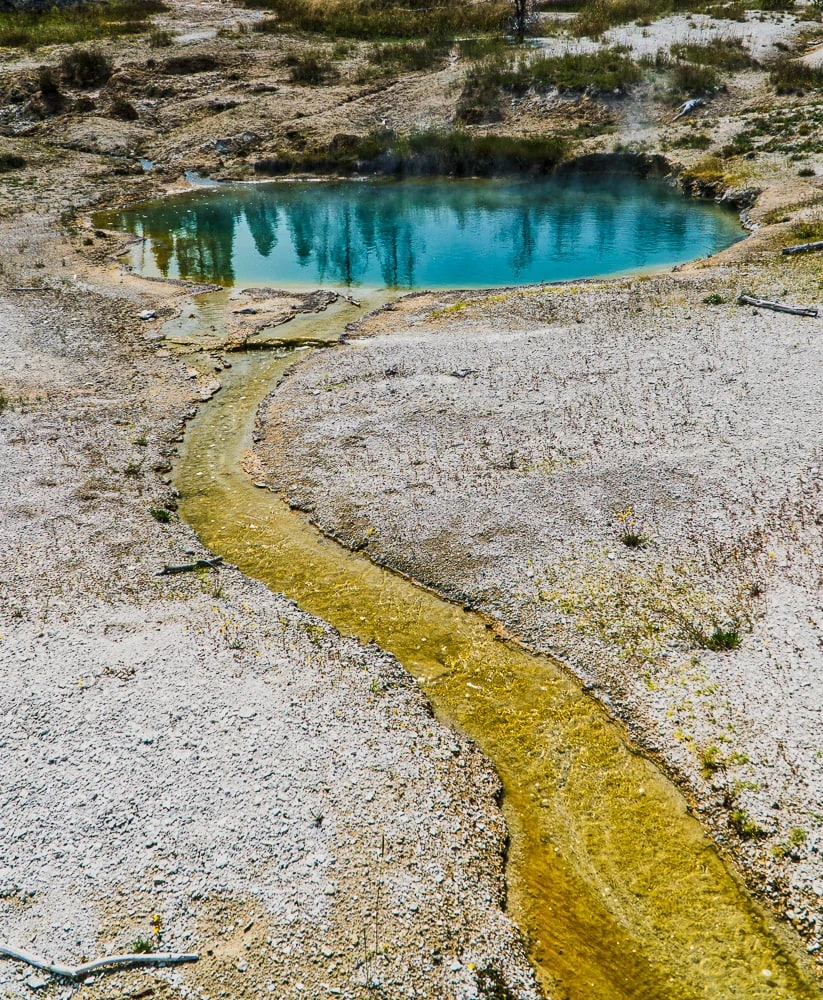
Most of the geysers and hot springs are easily accessible from one of two boardwalks, which wind around the area. The boardwalks offer views of some beautiful sights such as Abyss Pool, Black Pool, Fishing Cone, and Painted Pool.
The hot spring known as Black Pool used to live up to that name. It was a cooler pool that allowed for more bacteria to grow. The dark brown coloration leads to how the pool got its name.
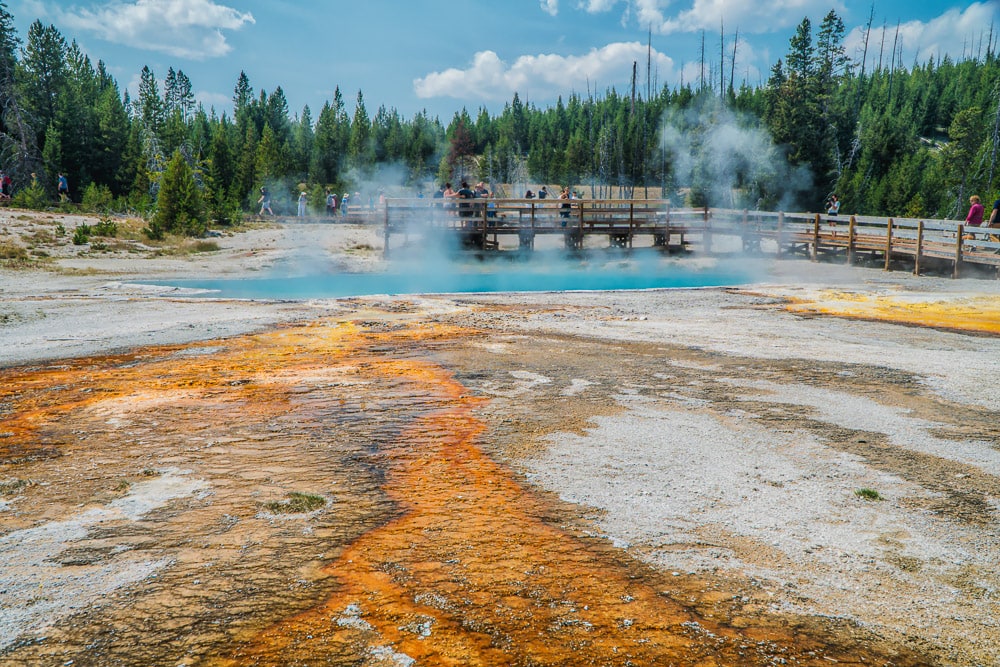
Since the seismic events in 1991, the pool has heated up and lost its bacteria, leaving it with a bright blue color. Some of the ruddy brown bacteria live on and can be seen in the stream that leads out of the pool to Yellowstone Lake.
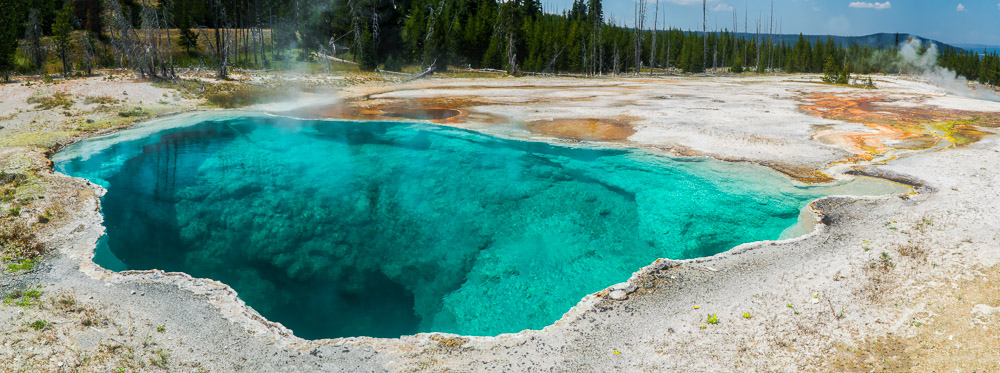
The 53 feet deep Abyss Pool is one of the deepest hot springs in Yellowstone and was an active geyser as recently as 1992.
The West Thumb hot spring pools are very large, and the boardwalk goes right up to the edge, so be sure to bring a wide angle lens when photographing this spot.
Yellowstone Lower Falls from Artist Point
No list of best places could be complete without mentioning The Grand Canyon of Yellowstone! One look at its turquoise blue waters and incredible waterfalls will make you fall in love with it. The best part about it is that you can photograph all of this beauty from multiple viewpoints, Point Sublime, and the famous Artist Point.
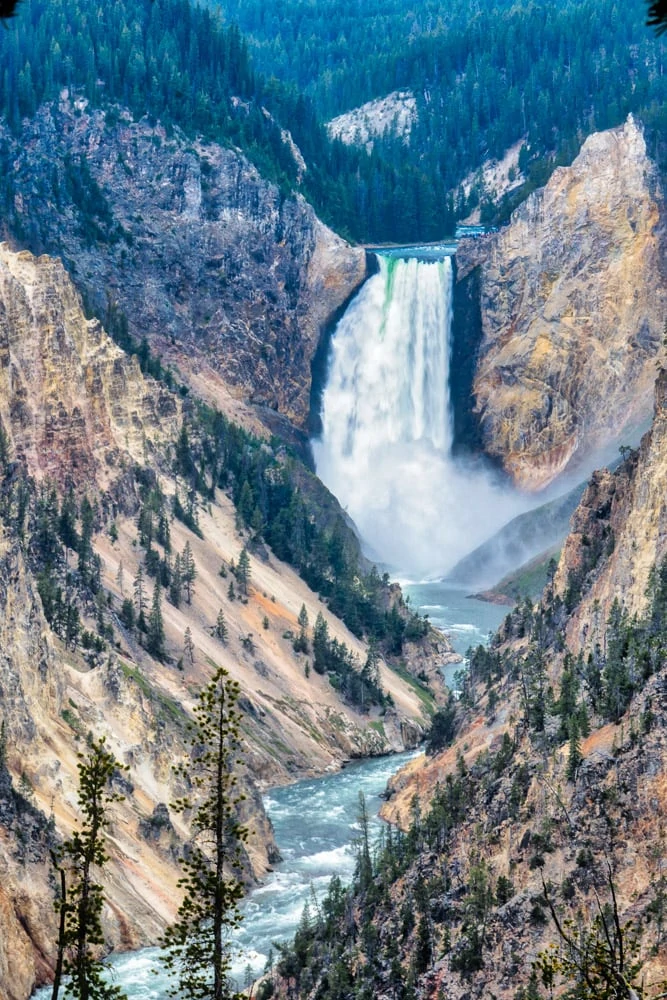
The Lower Falls plunging 300 feet into the canyon below is one of the most stunning views in Yellowstone National Park and an essential stop on your list if you’re visiting.
Miles and miles of jagged, steep canyon walls are painted in yellows, oranges, and pinks as you look down the canyon from Artist Point. You may be able to view osprey, ravens, swallows, and bald eagles nesting along the cliff with binoculars.
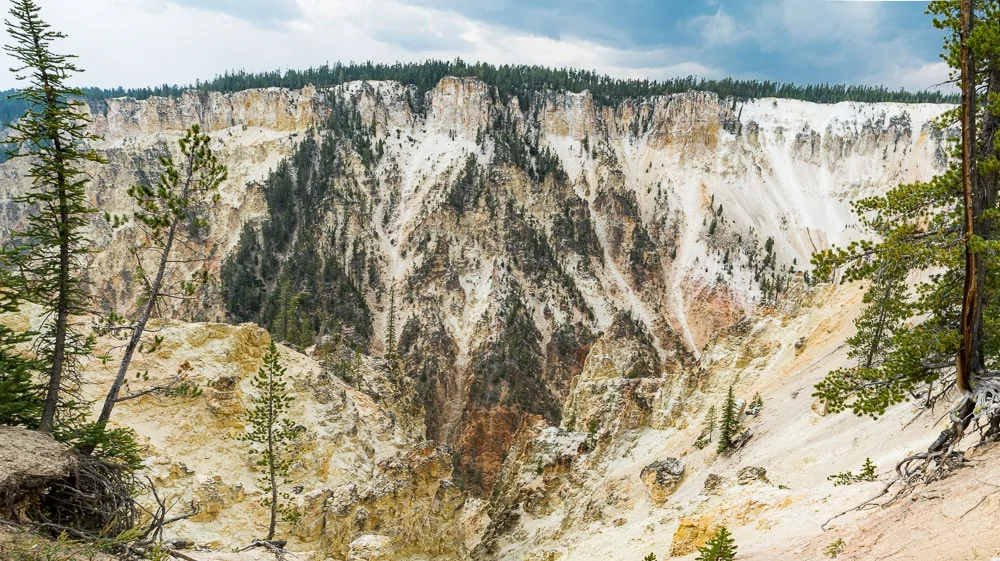
It’s easy to understand why Artist Point has been one of Yellowstone Park’s most popular vista points for over a century when seen from this vantage point. It’s easy to see how this is one of the most popular of the Yellowstone photo spots.
Artist Point is a great perch to see the lower falls and an excellent lookout point for the Grand Canyon of the Yellowstone and the lower falls. This view of the yellow walls of the canyon lets you know how the park got its name.
Old Faithful Geyser & Lodge
Old Faithful Geyser is the most iconic spot in Yellowstone National Park. It’s a must-see when in the park. As Yellowstone’s oldest monument, Old Faithful has been a part of many personal journeys, and the memories will last far beyond your visit.
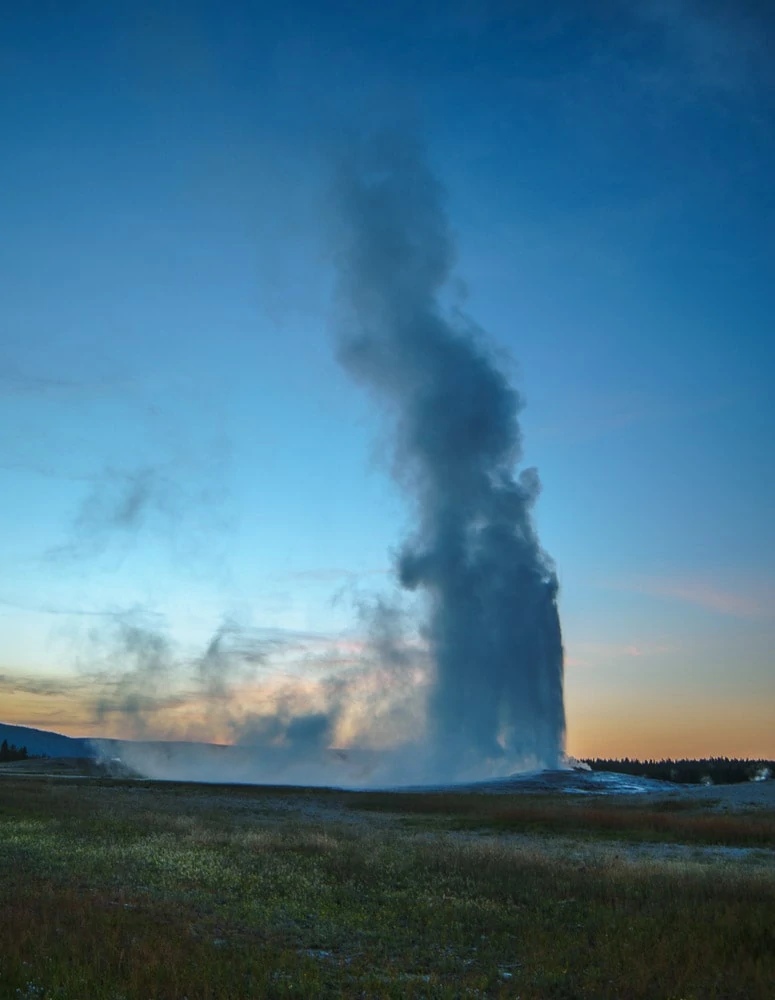
The landmark is famous for its reliability and consistency. The average time between eruptions is about 90 minutes but can vary from 50 to 120 minutes. Eruptions usually last from 1.5 to 5 minutes sending from 3,700–8,400 gallons of superheated water 100-200 feet into the air.
When you visit Old Faithful, you’ll get a chance to see the historic Old Faithful Inn. Designed by Robert C. Reamer, it is made from native materials and was built in the winter of 1903–1904. Catch a ranger talk or educational program on this free attraction to learn more about the geology of Old Faithful.
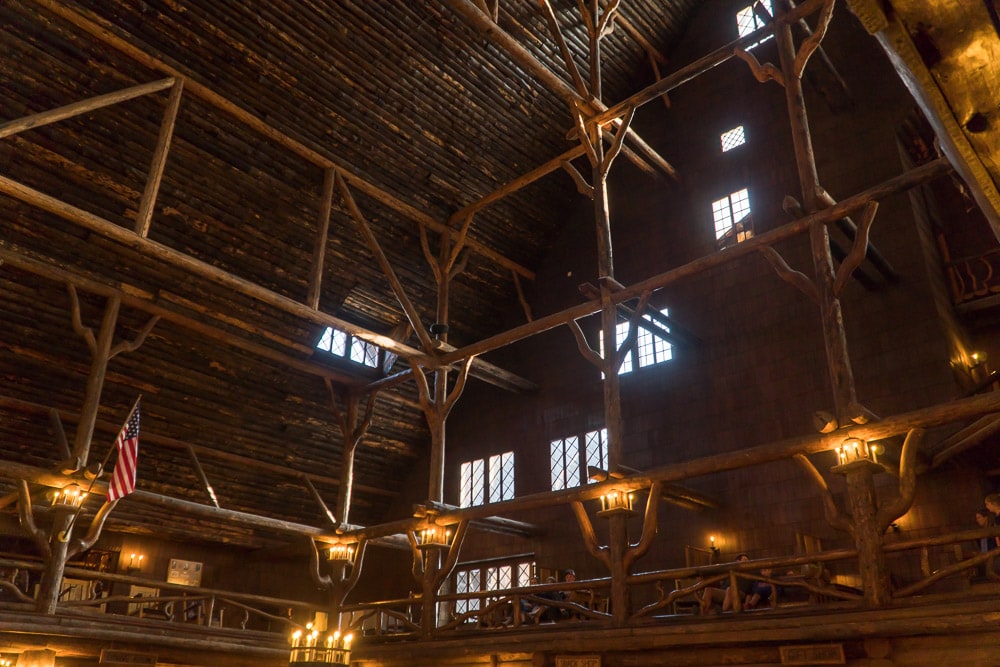
If you want to capture some great memories from your time at Old Faithful, make sure to stop by the visitor center for some last-minute souvenirs before heading out of the park.
Lamar Valley / North Yellowstone
The Lamar Valley is one of the most stunning views in Yellowstone National Park and an essential stop on your list if you’re visiting. With open grasslands and towering mountains, you’ll get a real feeling for what the Yellowstone area looked like to the first people who visited here.
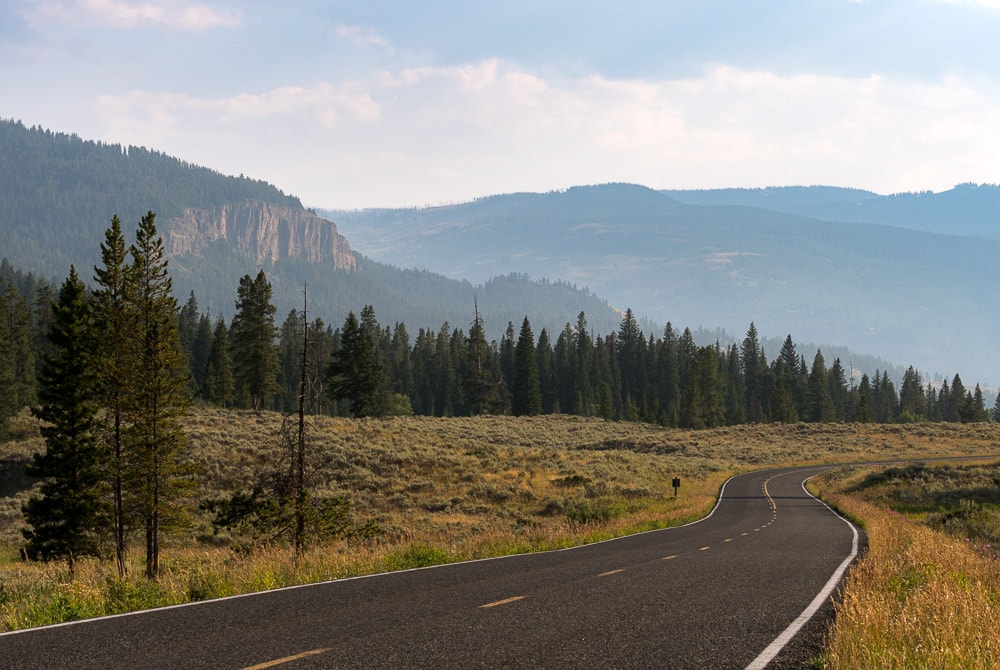
In the early morning and late evening hours, you’ll be able to photograph bison, elk, coyotes, and maybe even grizzly bears. These majestic creatures are exciting to photograph, especially as they graze in the meadows.

This is where you will want to bring out your telephoto lens to get better photos of the animals. Remember the park requires you to stay a “minimum of 25 yards – the length of two regular school buses – away from most large animals and a minimum of 100 yards – the length of a football field – away from bears and wolves at all times”
Hayden Valley / Central Yellowstone
The Hayden Valley is located in the park’s heart, and it’s a lovely spot to explore. This valley with its gently meandering Yellowstone River and the chance to view animals. The arrival of dawn offers spectacular views of golden sunrises as they light up softly sloping hillsides, as well as an even better opportunity to see animals like bears and wolves who are more active in the early morning.
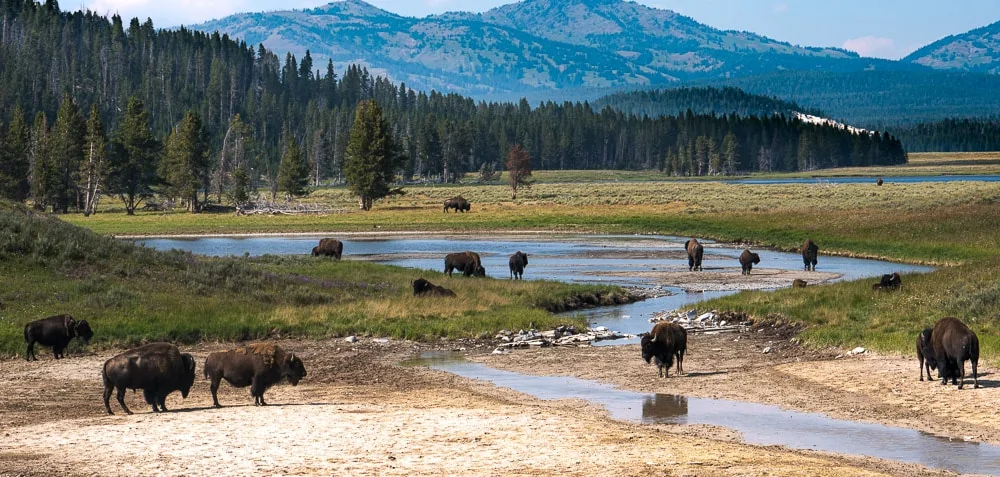
Waterfowl are plentiful in this region, and the Bison frequently pass through it on or near the road (if they’re on the road, you’ll see how quickly traffic stops to a halt in a “bison jam”). Near the Yellowstone River, you may expect to see ducks, Canada geese, pelicans, and perhaps swans swimming or lounging. You’ll undoubtedly be able to locate numerous locations for excellent photos with so many roadside pullouts throughout the valley!

Wrap Up
You don’t need to go too far off the beaten path for great photo spots. Whether you’re standing on a cliff overlooking a valley or watching the wild animals in the upper geyser basin, you’ll find some of your best shots right here in Yellowstone National Park. If you’re looking for places to photograph within Yellowstone National Park, try some of these nine favorite photo spots.
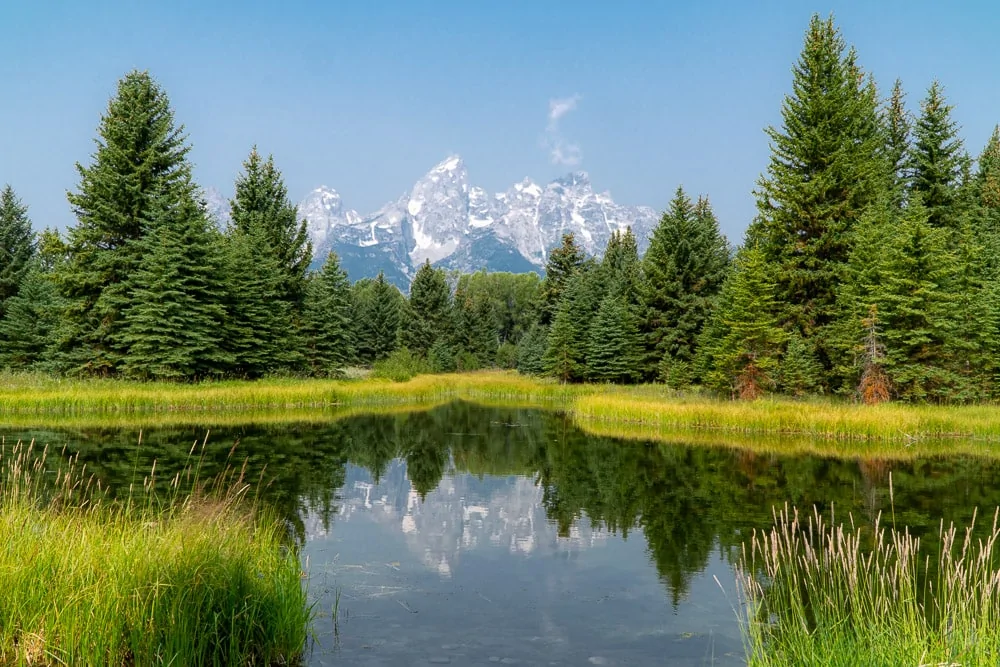
And as a reminder, Yellowstone has a great neighbor, Grand Teton National Park. The park was established in 1929 and is home to some of the most beautiful mountain scenery in the country. So add some extra time to get there as well.




